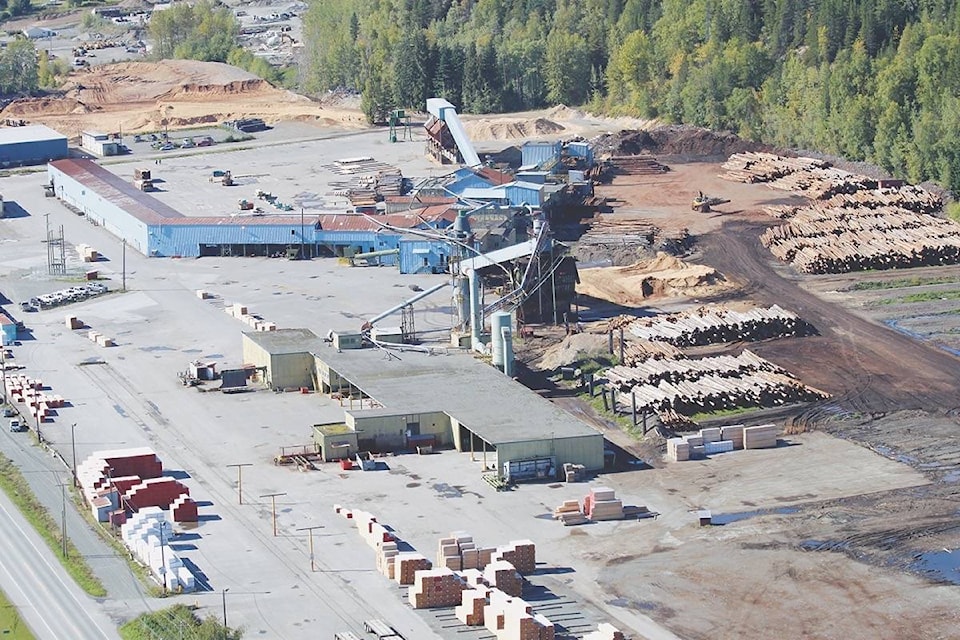SKEENA Sawmills is spending $10 million for the first phase of modernizing its sawmill here in Terrace , a move that will poise the mill to shift into the harvest of second growth timber.
The upgrade has already started, with the mill buying a high-speed canter saw for small logs, equipping it to process that second growth timber which is smaller in size.
“This is part of a complete overhaul of the plant,” said Roger Keery, vice president of operations at Skeena Sawmills, explaining that a complete project will take several years to finish.
“It’s one step… and the first step has got a budget of $10 million,” Keery said of immediate improvements.
A complete modernization of the mill could cost as much as $100 million, but the exact amount will depend on how many changes Skeena Sawmills decides to do.
“It will depend on the scale of change we determine is required,” Keery explained, adding that the factors influencing those decisions include the long-term wood supply, timber characteristics and lumber markets.
Keery said the immediate upgrade is needed because Skeena Sawmills was built to process larger, old growth timber, but the mill needs to adapt for the smaller sized second growth trees.
“The facilities that we have are unsuitable for processing second growth wood in large quantities,” said Keery. Right now the smallest logs the mill can effectively process are 10-inches in diameter.
Second growth forests typically have trees with a diameter between six and eight inches, and while Skeena Sawmills processes some of that smaller wood now, the vast majority of their harvest is old growth.
“Once the second growth (timber) becomes a significant portion of our volume, we must change our facilities to accommodate that,” Keery said, adding that processing smaller wood will benefit contractors who harvest.
“Right now we are restricted by size and we can only take a percentage of [the second growth wood],” he said.
“We want to be able to take all of it… so that people can sell us lots of timber and we can efficiently process all of it, not just the larger material.”
Skeena Sawmills is also waiting on key forest information.
The information about the state of the forests here and inventory of timber available will help decide on plans for more spending.
Part of that inventory work is being pursued by Silverwood Natural Resource Consultants, which did some preliminary sampling of the forests for the Ministry of Forests, Lands and Natural Resource Operations several years ago.
Silverwood is now seeking money from the province to fully develop timber projections.
In the meantime, Skeena Sawmills continues to research the purchase of a scanner, which employs CT technology in order to ensure a log is cut in the best way to produce the highest value product.
Testing was partly funded by the federal government and should be finished by the end of July, said Skeena Sawmills woodlands manager Greg DeMille.
“It’s almost complete, the testing of that technology to see if it can work well in our fibre supply,” he said.
A sample of Terrace timber was sent to FP Innovation in Vancouver to be scanned and to see whether it would significantly benefit the mill and increase fibre-use and profits. The scan of that sample is being analyzed now by Springer - Microtec, the company that sells the scanners.
“Depending on the analysis results, it will allow Skeena to decide if there’s further opportunities investing in the log scanner,” said DeMille.
“We’re guessing there’s a lot of benefits to us on fibre utilization and optimization for our mill.”
With improvement plans in place, the mill is also testing the milling of small diameter-size logs.
Terrace Community Forests general manager Kim Haworth said they sold Skeena Sawmills 1,500 metres of hemlock and balsam for that testing.
“We are logging this to an eight-inch top, which leaves a great deal of waste,” Haworth said. “Fortunately our export buyer is using the smaller log so we can make this trial work.”
